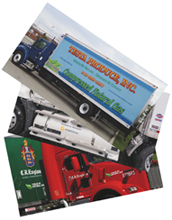At the Auto Research Center, Angus Lock, head of aerodynamics, reports: “Our primary interest is in reducing the aerodynamic drag. Depending on how close you run the vehicles together, you can see drag reductions of up to 50 percent— though this involves trucks or cars literally within feet of each other.”
Further, he explains, most studies were conducted with vehicles running from 18 to 20 feet apart, though Lock says “you can see fuel improvement from the aerodynamic drag reduction of 10 to 20 percent. There’s a big potential for fleets, or for individual owner-operators, to reduce fuel costs if this technology becomes viable.”
Lock says the technology can also address another trucking industry challenge, the lack of highly trained drivers. With platooning, the better trained driver operates the lead vehicle and drivers with beginning skills or less experience can operate the following trucks, thus saving fleet operators on training costs.
“If you have a platoon of vehicles, you only need to have one highly trained driver at the head of the platoon. It potentially leads to safer road conditions, and less accidents for fleets,” Lock adds.
Other Ways to Increase Efficiency
Roeth at NACFE reports on other technologies to improve transportation efficiencies. For example, he cites tire pressure systems that can ensure the appropriate pressure in all tires at all times. “There is a benefit to fuel economy, tire wear, and breakdowns caused by damaged tires.” Inflation systems use the truck’s air system to inflate tires automatically, he says.
There are also about twenty different technologies or practices to limit or eliminate engine idling while a driver rests, and uses air conditioning, televisions, or refrigerators. One promising advance is auxiliary power units that allow the driver to turn off the big engine and use a smaller one to maintain various systems.
Whether through alternative fuels like natural gas, or new technologies like platooning, produce transporters are looking at a more efficient and automated future. These technologies have the ability to provide a number of advantages from boosting margins and improving public image, to staying competitive in both the short and long term.
Photos courtesy of Testa Produce, Inc.; Cold Star Freight Systems, Inc.; and C.R. England, Inc.



